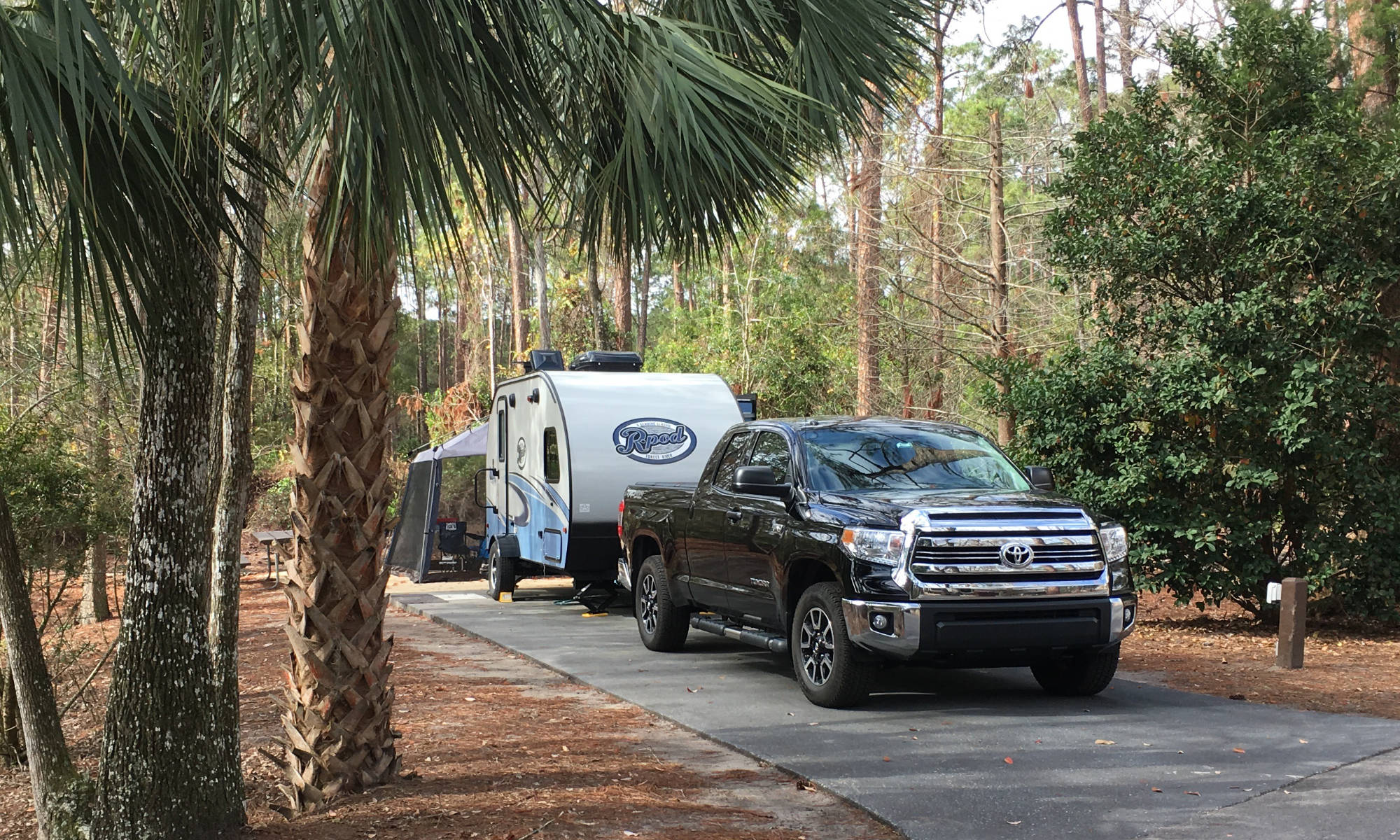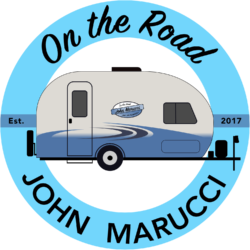In this blog, we’ll cover 12 first-trip tips for those just getting started with RV travel. This is an essential topic for anyone starting out with their first RV and should help you gain confidence more quickly.
So, let’s jump into the twelve first trip tips with a bonus tip at the end.
Tip 1 – Videotape your RV Walkthrough
If you are buying a brand new or used RV, the dealer or prior owner should walk you through the RV and explain how everything works. If possible, have someone with you videotape the walkthrough on their smartphone. Ensure the dealer or prior owner shows you how to hook and unhook your RV to your tow vehicle. This will be a great resource to have when you can’t remember what the dealer or prior owner said about a specific item.
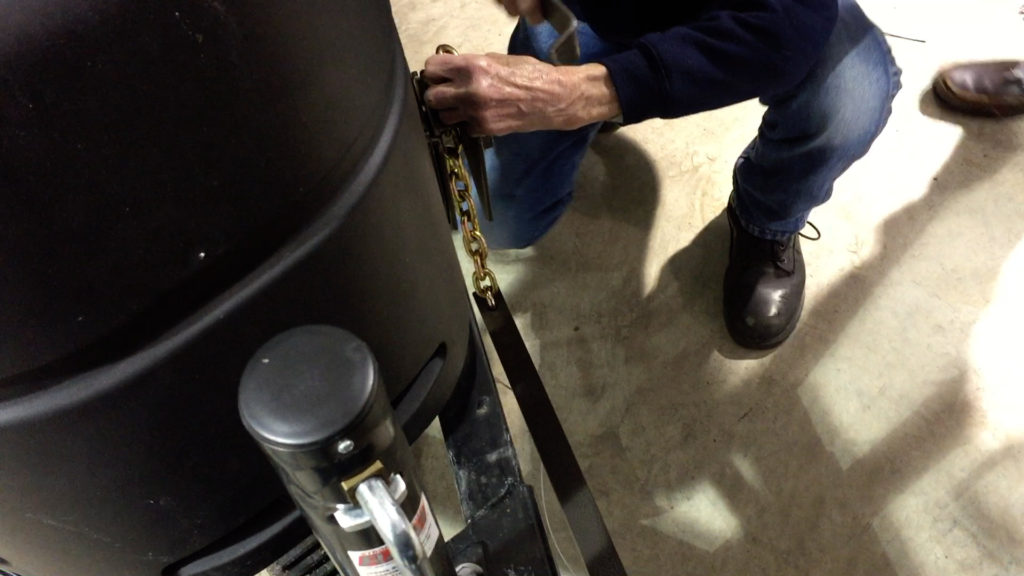
Tip 2 – Practice Hooking and Unhooking Your RV
If you are new to RVing, one of the more complicated things to master is hooking up your RV to your tow vehicle. Hopefully, you were able to videotape hooking up the RV during your walkthrough with the prior owner or the dealer. There are real safety concerns here, so be careful to follow the process carefully. This is all the more true if you are using sway control or a weight-distribution hitch. Some of these can be tricky to use, so you will want to learn how to use the hitch and practice putting it on and taking it off. If you are traveling with someone else, one thing you can do to help ensure that you have not overlooked something during this process is to have the other person cross-check your setup. We have a beginner-level video on towing with a weight-distribution hitch that can help in this regard. Just see the link in the video description.
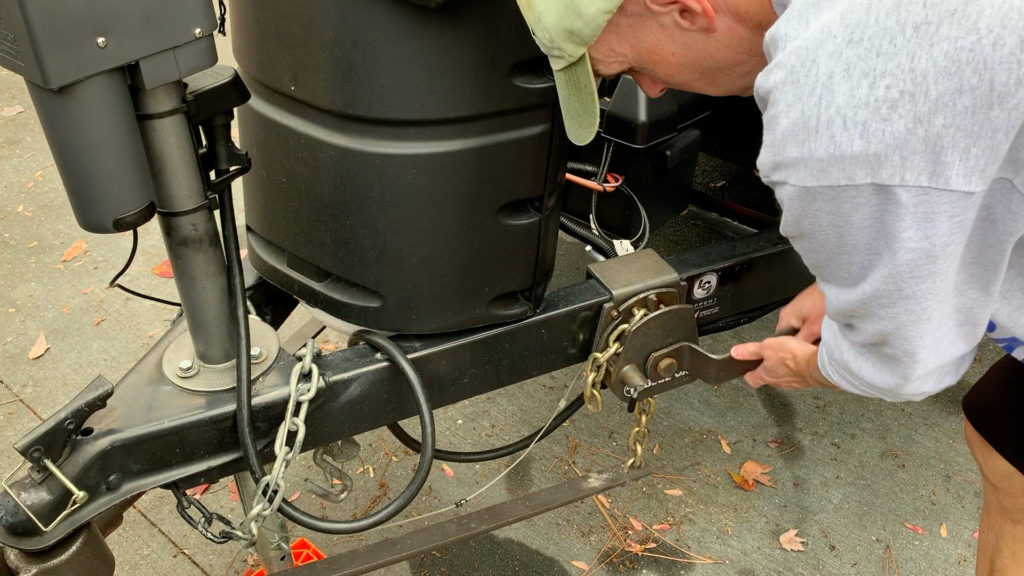
Tip 3 – Learn about RV Tire Safety
Most of us forget about the tires on the vehicles we drive each day. Yet on RVs, you need to regularly check your tires before using them. Remember that most RVs sit for long periods between usage, and the tires can slowly lose air while being stored. Often the tires that come with a new or used RV can be old to start with. I remember replacing the tires on one of my RVs only to find that the “new” tires were already two years old based on the date stamp on the tire. The tire shop replaced them with actual new tires, so it worked out, but if I hadn’t known to check the date code on the tires, I would have paid full price for an older new tire. There is a lot more to say about tires and tires safety, including the topic of tire pressure monitoring systems (TPMS). We have a video that you can watch on the channel to learn more about this important subject.
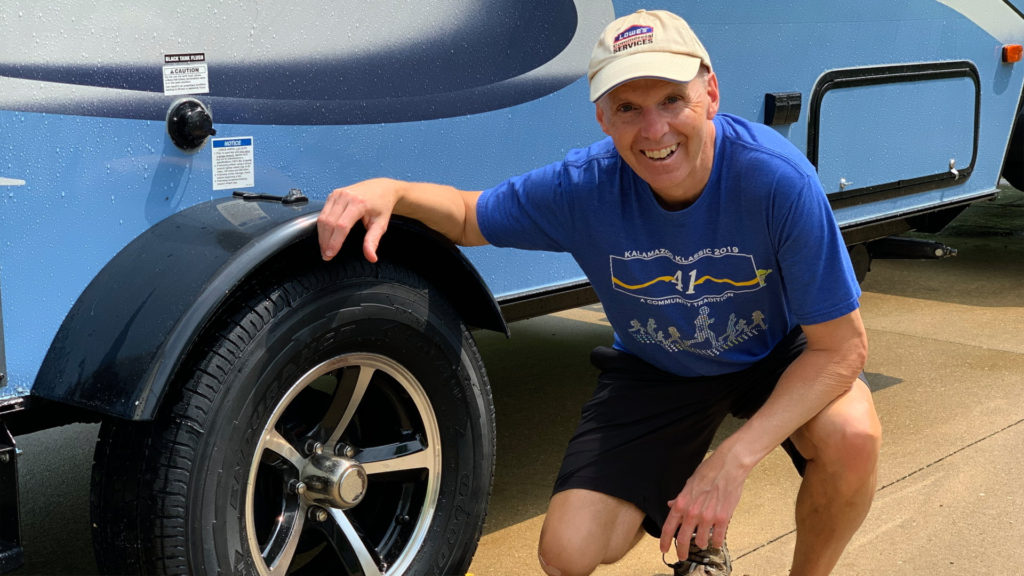
Tip 4 – Don’t Overpack
This may seem obvious, but it is easy to overpack for an RV trip, even for your first trip. If you are doing a shorter first shake-down trip at a local campsite, you may not run into the issue of overpacking, but you may be surprised. A tip is to make a list of what you think you should take and pack accordingly, but once the trip is completed, go over your burn rate. By burn rate, I mean how much food, water, and clothing you consumed or utilized during your time on the road. This way, you can begin to gauge your overall burn rate for longer trips. There is way more about this than we can cover here, and there are plenty of ways to lower your burn rate, yet for the first time out, try to get an early gauge of what you go through.
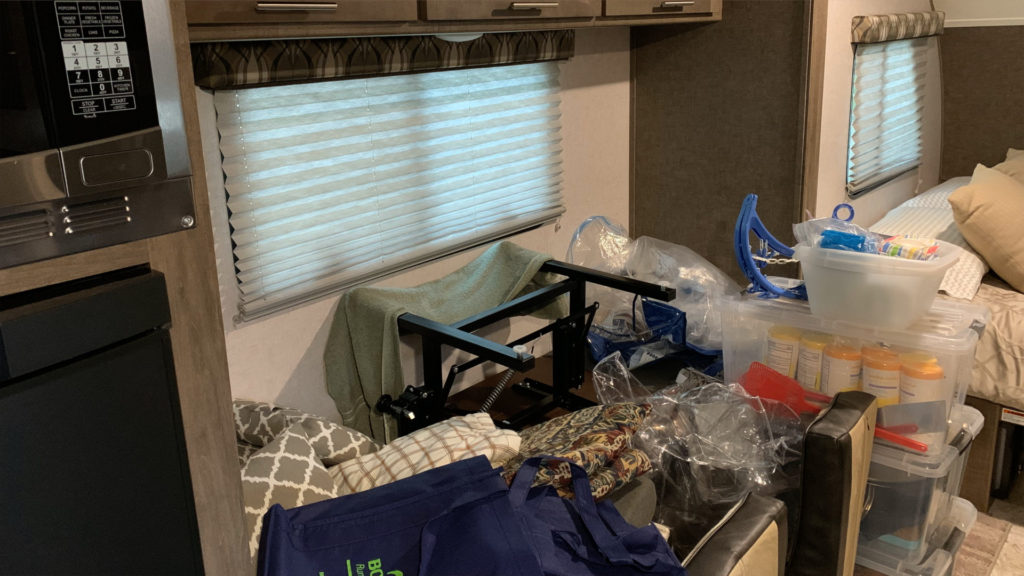
Tip 5 – Camp Nearby Your First Time Out
It makes sense that when you first go out in your new RV, that you camp nearby. This is considered a dry run or shake-down trip so that you can get used to your RV and test everything out. Some dealers will let you stay overnight on their lot to test everything after purchase. This makes sense if your schedule allows, as any punch list items can possibly be worked out immediately by the dealer. I like the idea of staying at a state park nearby to try everything out and get used to the RV. It is also helpful on your first trip to not camp too far away from a big-box retail store in the event that you forget something. Doing this may also help you pack less since you can purchase something if you need to.
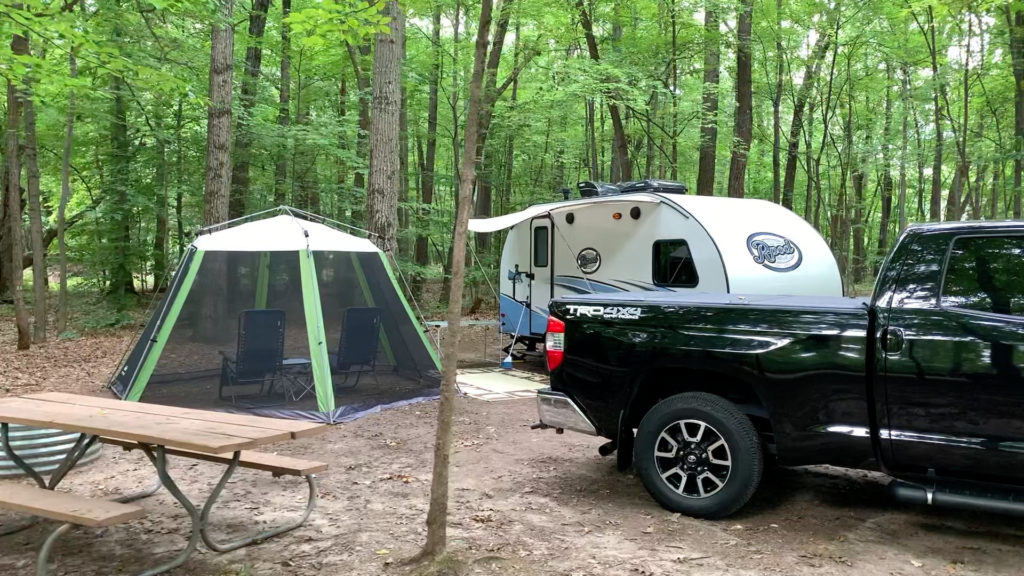
Tip 6 – Be a Contrarian
Regarding your first trip nearby, try to book your first overnight trip on a weekday. If possible, I think booking a Sunday night or Monday night will work so that you arrive after the busy weekend crowd has left and depart on a weekday with fewer campers around. This way, you can practice things like backing in or using the public dump station without the pressure of many people watching you back in or waiting behind you at the dump station.
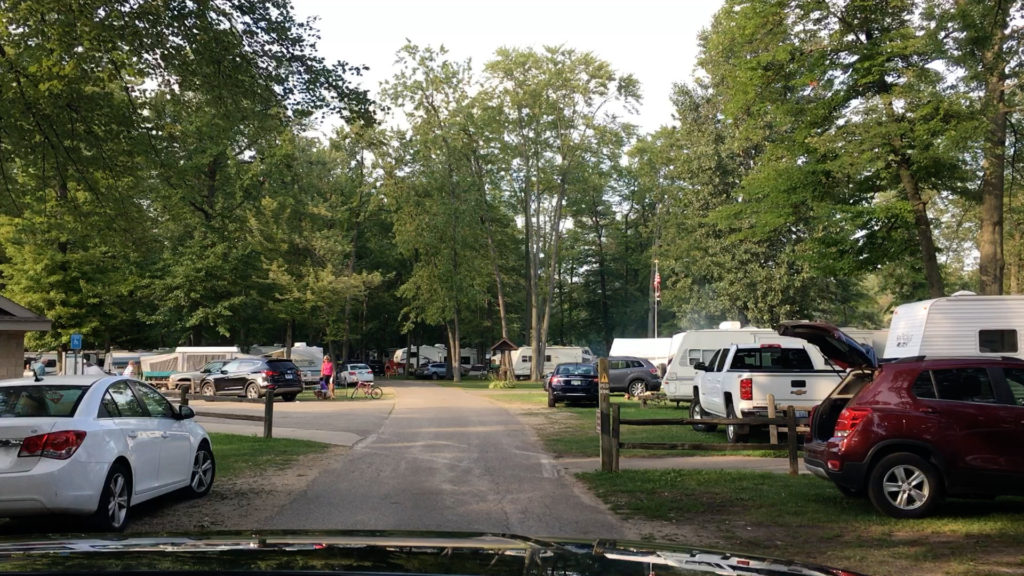
If you must book a weekend trip due to work or school commitments, consider buying an extra night on Sunday. This will allow you to check out late and hit the public dump station later in the day with fewer people around. Having the extra time and less people pressure will help when you are at the dump station for the first time. No one likes having people impatiently waiting behind them at the dump station, so departing when this is less likely is a great idea when you are first learning. If you haven’t already viewed it, we have a dump station basics video that will help you gain confidence at a public dump station.
Tip 7 – Practice Backing Up
Besides using a public dump station, the second most stressful thing for me about RVing is backing into a campsite. I have been doing this for a while, and I still run into difficult campsites where backing in is fairly stressful. Practicing backing in at a local open parking lot is helpful, but there is no substitute for the real thing to gain confidence. Generally, if you can avoid busy times at a campground, you may be able to practice backing in while there. Just be aware of traffic and people in the campground loop if you decide to practice backing in.
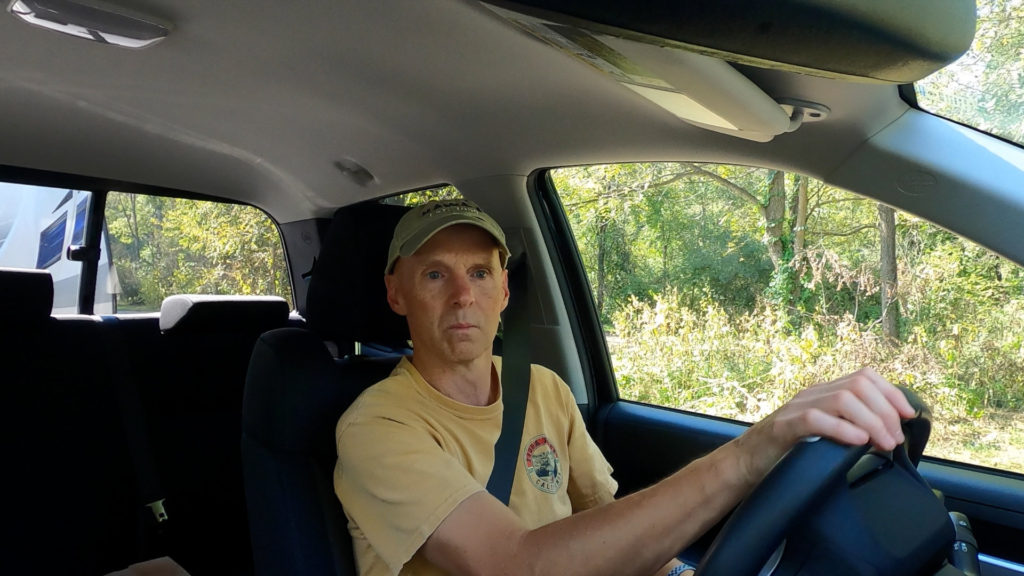
Tip 8 – Allow Extra Time to Depart
Leaving the house to go camping can be a frustrating experience, especially if you have unreasonable time expectations. I think the third most stressful thing to me about RVing, behind using a public dump station and backing into a campsite, is trying to leave the house for a trip. It may be the way I am wired, but it is challenging not to have some sort of unspoken time expectation of when you think you should be able to depart for your trip. For example, If I get off work at 4 p.m., we should be all packed by 5 p.m. and on the road. The campground is an hour away, so we should be set up by 6 to 6:30 p.m. Dinner at 6:30 should sound right. This is usually a recipe for a frustrating start to your trip!

These time expectations can be and have often been an absolute joy killer to the start of a trip. Much of our time expectations are unspoken. To remedy this, discuss a realistic schedule with anyone traveling with you. Be flexible and add extra time to your plans. This includes having proper expectations once you arrive at the campground to set up camp.
Tip 9 – Don’t Arrive Hungry
That’s right, don’t arrive at a campsite hungry! It takes a lot of energy to set everything up inside and out once you arrive, and backing in can be stressful. I have witnessed many people get very frustrated while backing into their campsite because they arrived tired and hungry. Costly mistakes can be made at this critical juncture beyond relational injuries. My solution is to carry a pack with food and drinks in the tow vehicle. I try to consume something like a protein bar before getting to the campsite and starting the backing-in procedure. You can’t necessarily arrive at every campsite without being tired from driving, but you can start the setup process with food in your system. You may also think about an easy-to-prepare dinner for the first night.
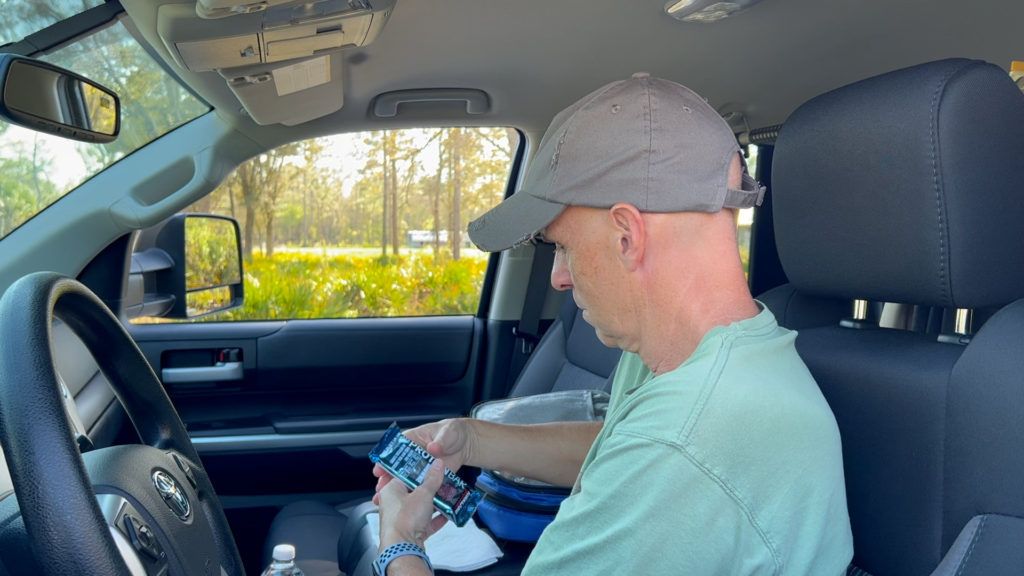
Tip 10 – Arrive and Set-Up During Daylight
On your first RV trip, try to make sure you arrive at your campsite with plenty of daylight remaining. All the stress involved with doing this the first time will only be amplified if you attempt it in the dark. It is also more dangerous to your RV and anyone helping you back in. This goes back to the tip of allowing extra time. Make sure you get an early start on your first trip (and any trip) so that you end up at your campsite with plenty of daylight.

Tip 11 – Expect RV Issues, Including Construction Debris
As someone with a new RV, you may be surprised at how much construction debris and sawdust appear after driving to your first campground. I was amazed and concerned by this until I learned that it was fairly commonplace for new RVs. When an RV is made, often no one at the factory goes back through with a shop vac to clean things up, especially behind and under enclosures. After a few trips, this should no longer be seen. Max inflation on tries can also cause more rattling of the RV as it goes down the road, so a tire that doesn’t have to be at max inflation to have the proper psi is a good idea.

Tip 12 – Test Everything and Make a Punch List
Think of your first trip as a test run more than a camping trip. Your goal should be to test everything out in the RV to ensure everything works properly. Don’t be too surprised if you have a few things that need attention from your dealer under warranty. Every RV I have owned has had to go back to the dealer for warranty work within a short time. Keep a punch list of anything that doesn’t work right or any items that are not correct; this is the goal of your first trip. Upon return from your first trip, contact your dealer and set up an appointment for the warranty work, given it may be several weeks before they can fit you in. The goal is that in the first few months of ownership, you have gotten any issues remedied so that you can enjoy the RV going forward.
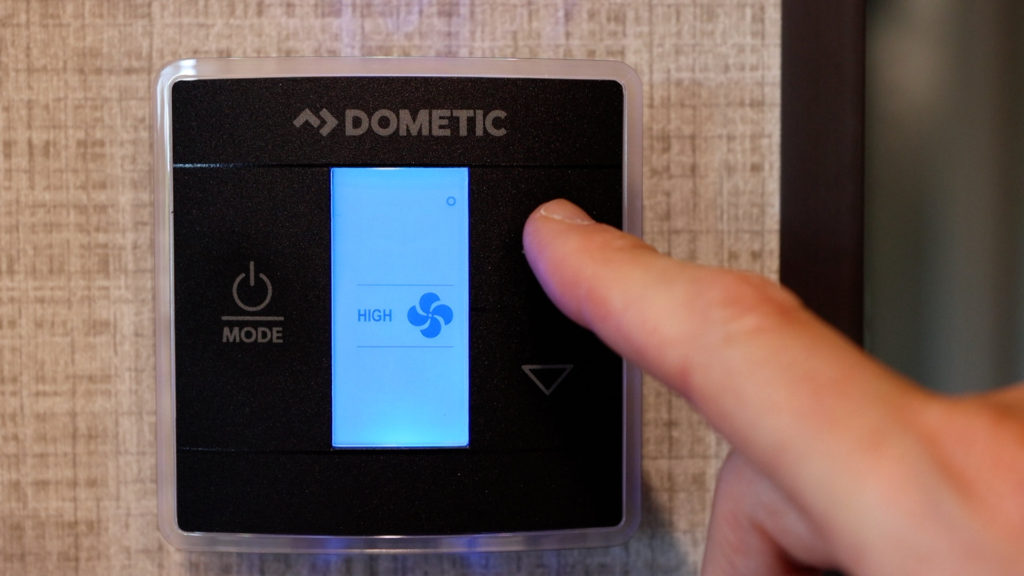
Bonus Tip – Use Good Communication Tools When Backing In
You can avoid material and relational damage with better communication when backing in at a campsite. If you are having someone spot you while backing in, using a cell phone or walkie-talkies is essential to good communications and a safe experience. My default is to use cell phones with your spotter. It seems to work best if they use Bluetooth headsets and I have the phone running through the tow vehicle speaker. This allows me, as the driver, to be hands-free. If we have no cell service, walkie-talkies work, yet these can be difficult for the driver to use while backing in.

So, there are the twelve 1st trip tips and a bonus tip to help you get started.
All the best in your camping endeavors!
We have specific groups for those New to RVing, those interested in our Latest Happenings, and those who want to be reminded of our Podcast episodes. Just click here to sign up for any of these groups.
As always, thanks to our fans who support our efforts by starting their shopping from our Amazon Storefront and by their generous financial support by using the THANKS feature located under each YouTube video ($ within the Heart icon). Your support is greatly appreciated!
